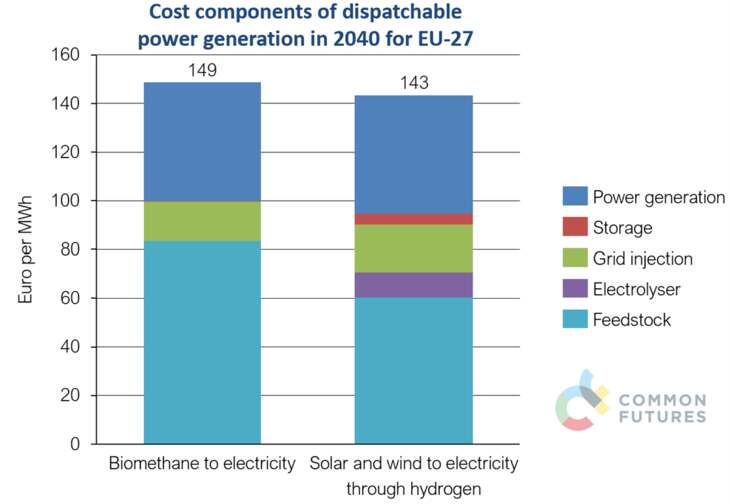In a system dominated by wind and solar power, around 2040, electricity from biomethane can be cost competitive with electricity from green hydrogen in providing the remaining dispatchable power, at a cost of ~€150/MWh. Batteries are cost-competitive from around 40 cycles per year, providing approximately 15% of this residual power demand. These are two of the main insights from Common Futures’ analysis for Eurogas, studying the costs of dispatchable electricity sources, taking into account the cost of conversion and storage.
The European electricity system must be climate-neutral by 2040. In Europe, the low levelised production cost of electricity of solar PV and wind means they will have a high market share. However, additional dispatchable power, based on storable fuels, will need to complement them.
Eurogas observed that the public debate on electricity supply in a fossil-free energy system for Europe was missing a cost comparison for dispatchable power based on different energy carriers and technologies. For this reason, Common Futures was asked to make an economic comparison of (green) hydrogen-fuelled powerplants, biomethane-fuelled powerplants, and batteries in meeting the demand for dispatchable power in 2040. This was done by modelling the costs to release 1 MWh from each of these production routes, where the production costs from hydrogen-fuelled and biomethane-fuelled powerplants were split up into components like feedstock and power generation.


